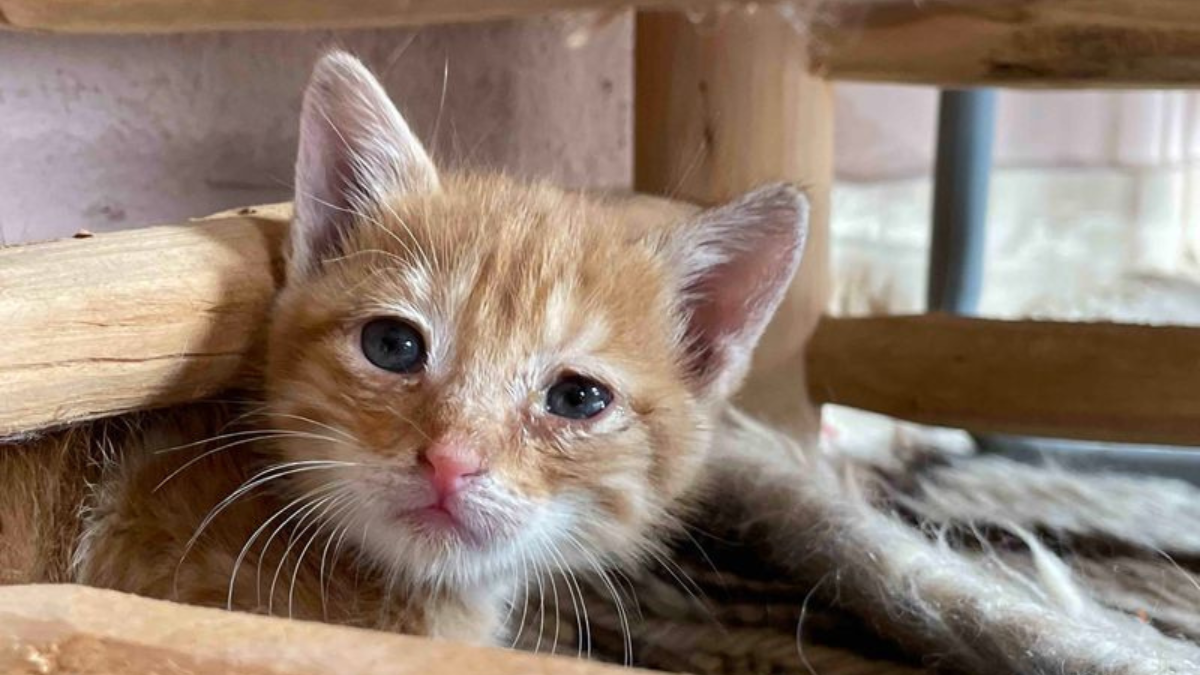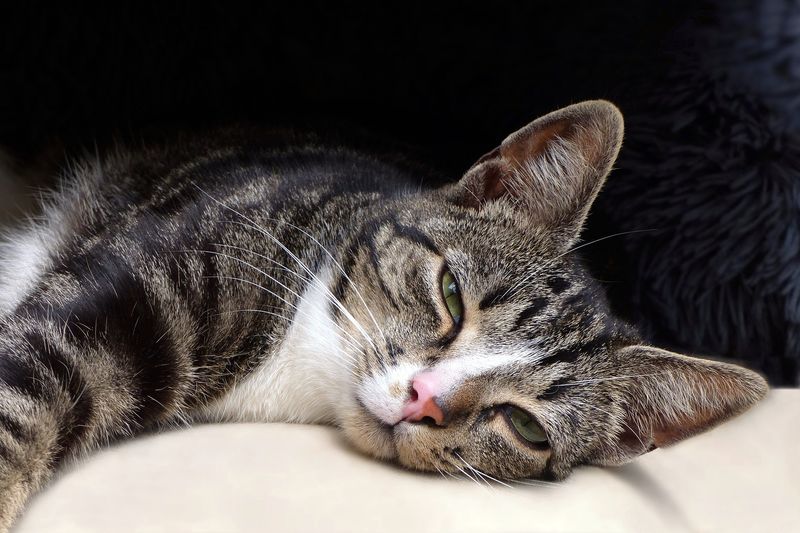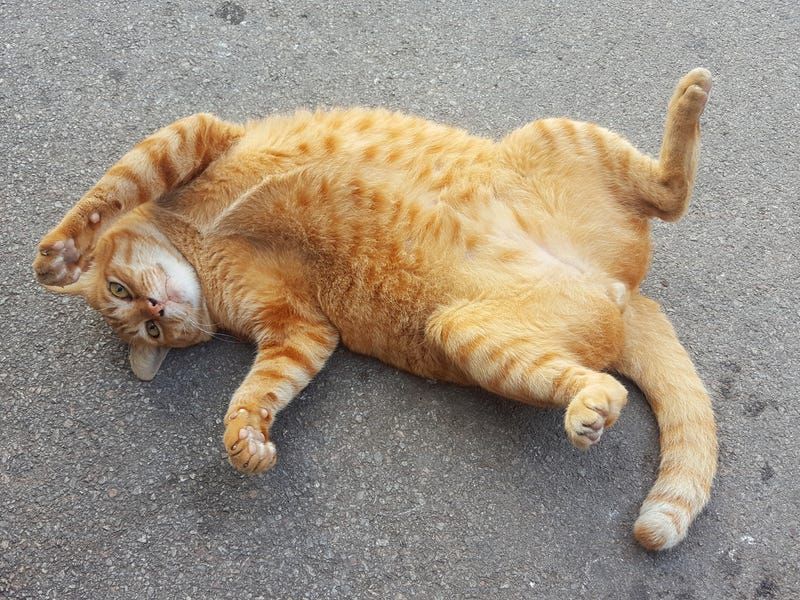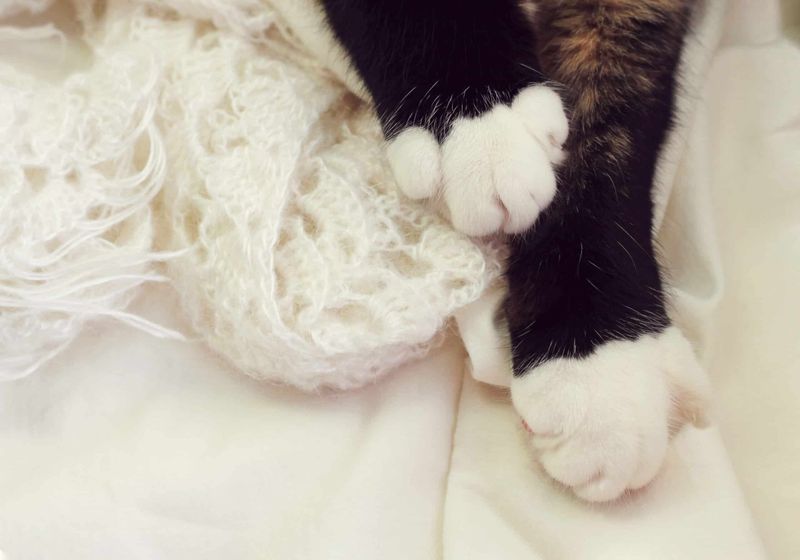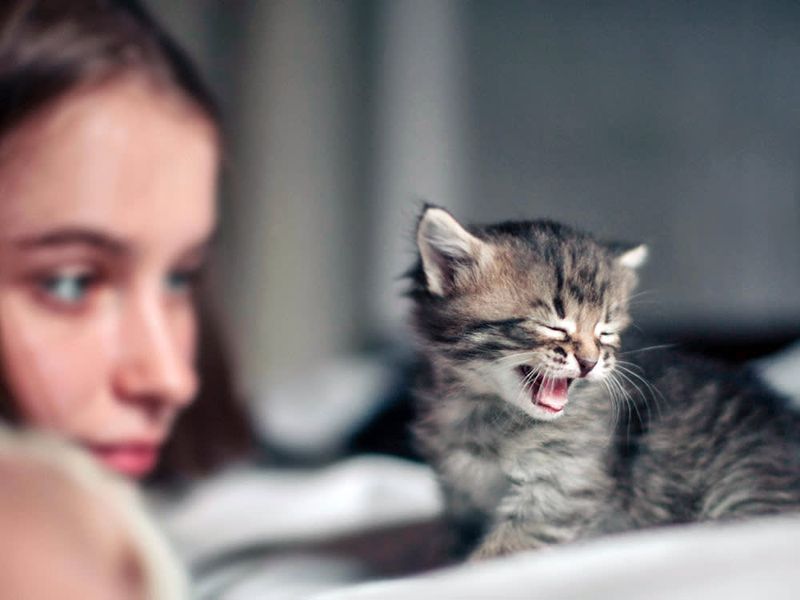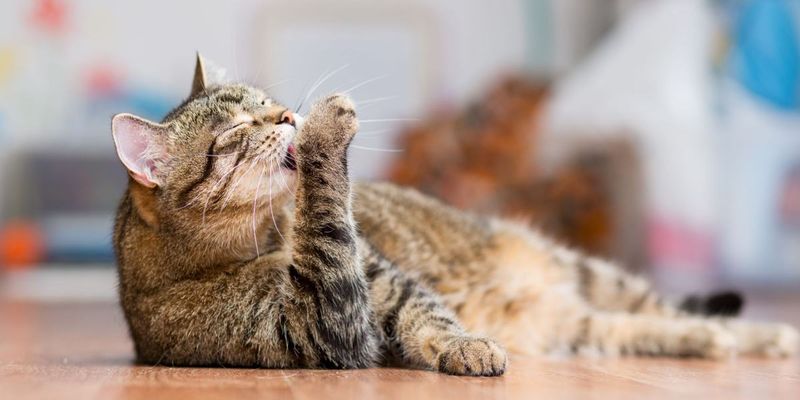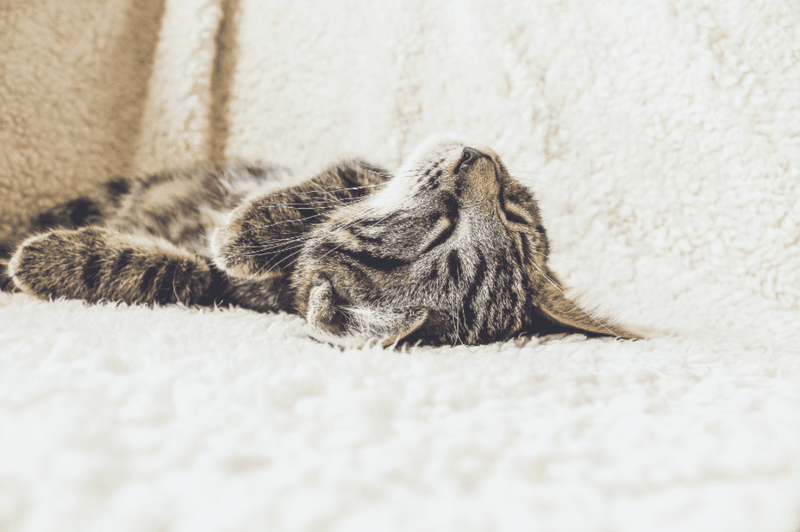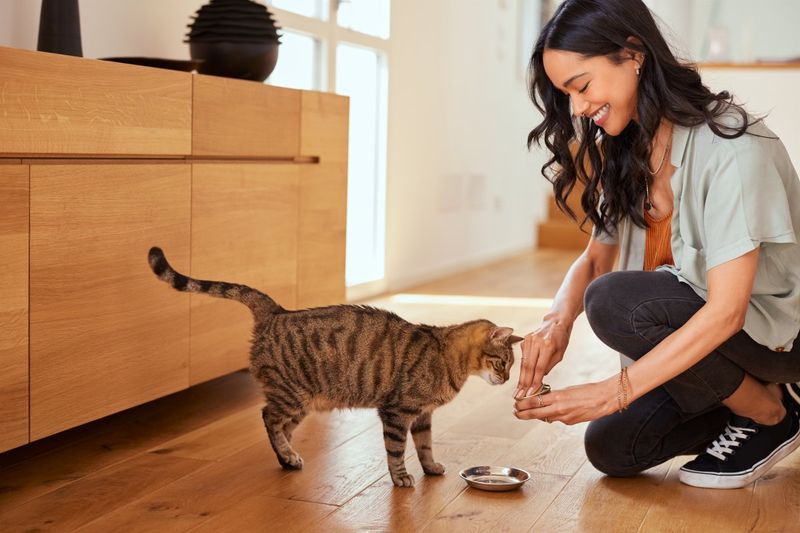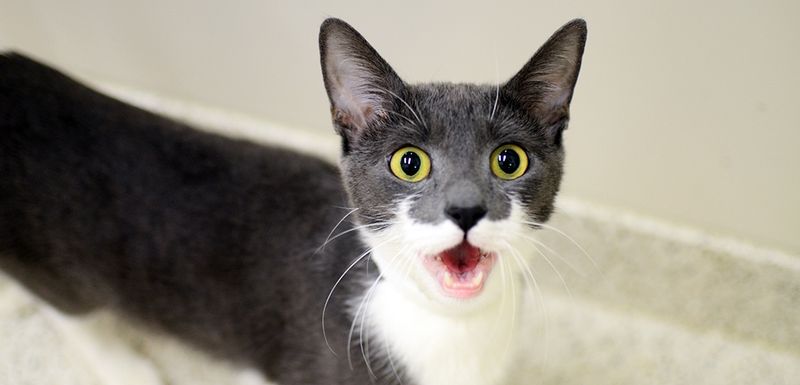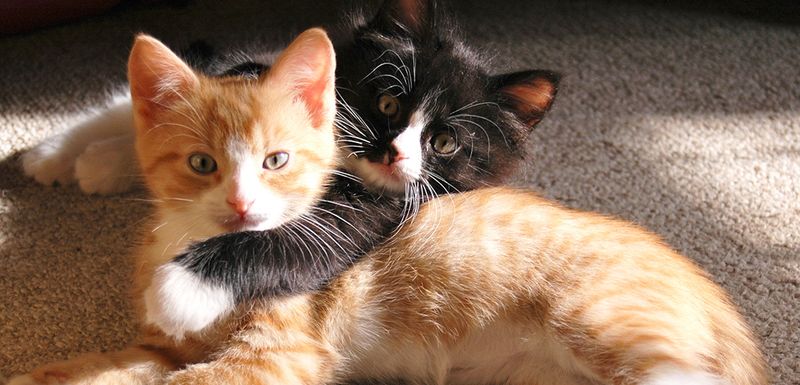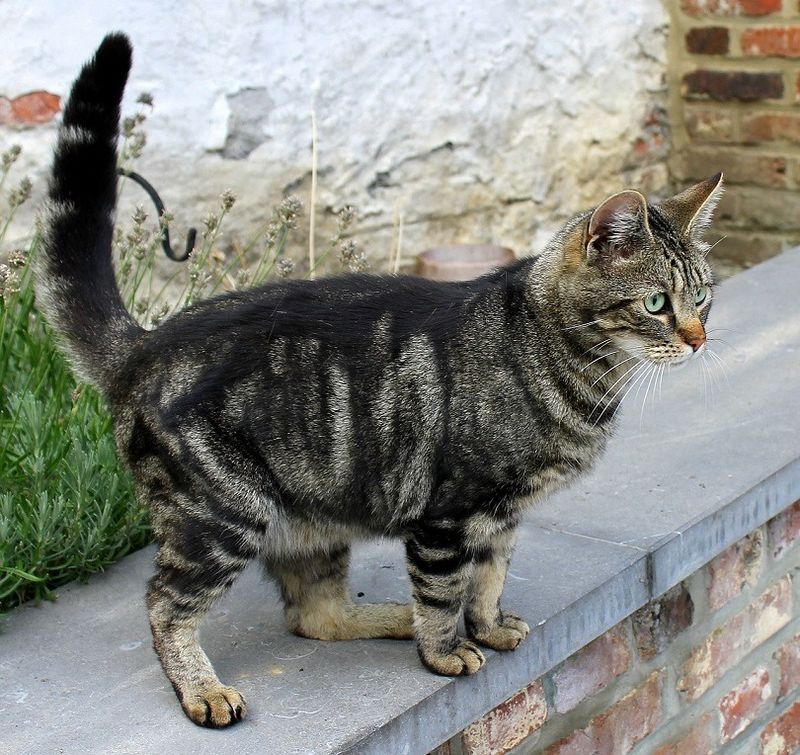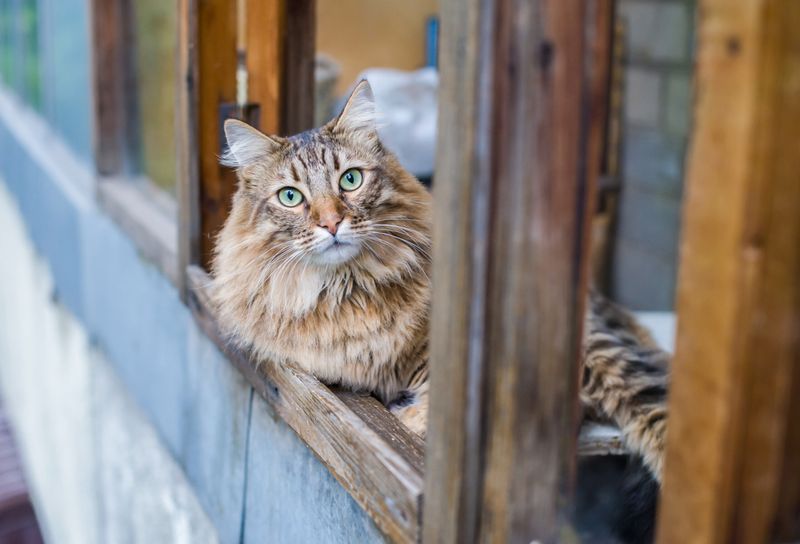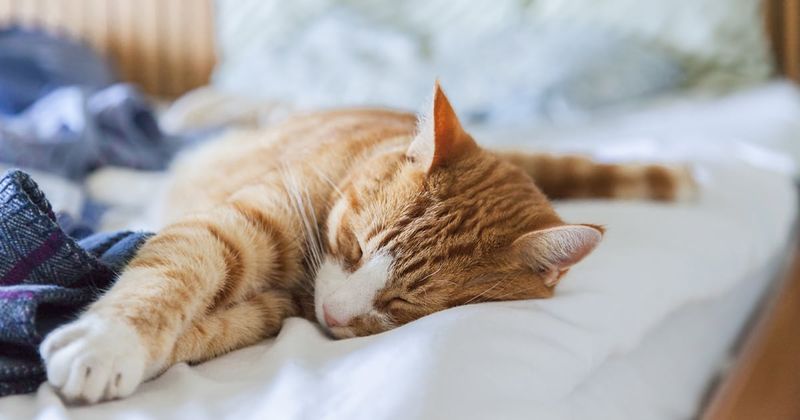📖 Table of Content:
- 1. Slow Blinking Communication
- 2. Belly Exposure Moments
- 3. Decreased Hiding Behavior
- 4. Kneading Paws Display
- 5. Playful Pouncing Returns
- 6. Vocal Conversations Begin
- 7. Grooming Ritual Expansion
- 8. Seeking Higher Ground
- 9. Naptime Vulnerability
- 10. Food Bowl Confidence
- 11. Morning Greeting Rituals
- 12. Territory Marking Shifts
- 13. Relaxed Tail Positions
- 14. Window Watching Engagement
- 15. Lap Time Initiation
- 16. Doorway Welcoming Appearances
- 17. Nighttime Snuggling Patterns
Bringing a rescue cat home is a turning point in the animal’s life. After experiencing stress, neglect, or trauma, each moment in a new environment holds the potential for healing. A calm, consistent atmosphere is essential for building trust.
Many rescue cats arrive with invisible wounds that require time and patience to heal. Physical recovery may be quicker than emotional adjustment, but both are equally important. Recognizing early signs of comfort can make a big difference in how a cat settles in.
Small behavioral changes often signal growing confidence and safety. Observing these signs helps identify when progress is being made. These subtle shifts are proof that trust is beginning to take root.
1. Slow Blinking Communication
When a cat begins to slow blink at someone, it’s a strong signal of trust and relaxation. This behavior, often called the feline version of a kiss, shows they feel safe. Rescue cats usually don’t offer this gesture until they’ve settled in and feel secure.
Watch for these deliberate, languid blinks during quiet moments together. When your formerly skittish rescue starts offering these gentle eye kisses, it’s worth celebrating – they’re telling you they feel safe enough to be vulnerable around you.
2. Belly Exposure Moments
Rolling over to expose their belly represents one of the most vulnerable positions for any cat. For rescues with trauma histories, this behavior marks significant emotional progress. The soft underbelly houses vital organs, and in the wild, protecting this area is instinctual.
Your cat isn’t necessarily asking for belly rubs (though some enjoy them). Rather, they’re demonstrating they trust you won’t harm them when they’re defenseless. This milestone might take months to achieve with particularly traumatized cats, making it especially meaningful when it happens.
3. Decreased Hiding Behavior
Many rescue cats initially create secret hideaways under beds or behind furniture. As healing progresses, these hiding episodes become shorter and less frequent. You might notice your once-invisible kitty spending more time in open living spaces, perhaps starting with brief appearances during quiet periods.
Gradually, they’ll extend these ventures, exploring previously “scary” areas with growing confidence. Some cats mark this transition by establishing new resting spots with partial visibility – like a cat tree where they can observe household activities while maintaining a sense of security.
4. Kneading Paws Display
The rhythmic pushing motion cats make with their front paws stems from kittenhood nursing behaviors. When rescue cats begin kneading on blankets, your lap, or other soft surfaces, they’re expressing contentment and security. This self-soothing behavior indicates they’re reconnecting with positive early-life experiences.
For cats with difficult pasts, the emergence of kneading shows they feel safe enough to access these comforting memories. Some rescues add purring or drooling to their kneading sessions – all signs they’re mentally returning to a state of kitten-like trust and relaxation.
5. Playful Pouncing Returns
A remarkable healing milestone occurs when your serious, watchful rescue suddenly pounces on a toy. Play behavior requires cats to feel both physically well and emotionally secure enough to let their guard down.
Initially, play sessions might be brief or happen only when they think nobody’s watching. As trust builds, these playful moments extend and may include invitations for you to join in. Even adult cats who never had proper kitten socialization can develop playfulness once they feel safe. This rediscovery of joy represents profound healing from past traumas.
6. Vocal Conversations Begin
The return of a cat’s voice is an important indicator of recovery. Rescue cats often remain silent at first to avoid stress and save energy. Hearing meows, trills, or purrs again shows they are feeling more at ease and ready to engage.
Your formerly quiet companion might start responding when you speak or develop specific vocalizations for different requests. Each cat has a unique vocal personality – some become regular chatterboxes while others save their comments for special occasions. Either way, these sounds represent their willingness to communicate rather than remain invisible.
7. Grooming Ritual Expansion
Neglected or stressed cats often have poor grooming habits. When your rescue starts spending more time bathing themselves, it’s a powerful indicator they’re feeling better both physically and mentally. This self-care behavior shows they have energy beyond basic survival needs and feel secure enough to be temporarily vulnerable during cleaning sessions.
You might notice them tackling previously ignored areas or spending longer periods smoothing their coat. Some healing cats will even groom household companions (human or animal) – an extremely intimate bonding behavior that demonstrates deep trust and acceptance of family members.
8. Seeking Higher Ground
Keeping low to the ground is common for cats that have experienced trauma, helping them escape quickly. When rescued cats start using elevated spaces, it’s a clear sign they’re gaining confidence in their surroundings.
Height gives cats both security and observation advantages. Their willingness to climb shows they trust no threats will come while they’re in a less escape-ready position. This vertical exploration often progresses in stages – from low furniture to higher perches. Creating safe climbing opportunities supports this natural healing behavior and helps cats establish comfortable territory within your home.
9. Naptime Vulnerability
Deep sleep requires absolute trust. When rescue cats transition from alert catnapping to full relaxation with extended REM sleep, they’re demonstrating profound healing. Signs include sleeping in exposed positions (not curled protectively), dream twitches, and maintaining sleep even when household noises occur.
You might catch them sprawled out, paws stretched, or sleeping belly-up. Some formerly vigilant rescues will eventually sleep through previously triggering sounds like doorbells or vacuum cleaners. This ability to truly rest instead of remaining constantly alert marks significant progress in their journey toward feeling permanently safe.
10. Food Bowl Confidence
Eating cautiously is common among rescue cats, who often remain alert or take quick bites before moving away. This nervousness usually fades as they settle into a peaceful routine.
Your formerly skittish kitty might start eating without constantly looking up, finish entire portions in one sitting, or even turn their back to the room while eating – a position of remarkable vulnerability. Some will progress to comfortable eating alongside other pets or family members, showing they no longer fear resource competition or feel the need to protect their food from potential threats.
11. Morning Greeting Rituals
Once healed, rescue cats frequently develop endearing morning habits to engage with their humans. These can start as brief visits to the bedroom and grow into more involved wake-up routines. A formerly reserved cat might tap your face, purr by your pillow, or settle where they’ll be noticed right away.
These behaviors show they’ve integrated you into their daily rhythm and actively seek interaction. Morning greetings are particularly significant because they demonstrate your cat is anticipating positive experiences rather than approaching each day with caution. This forward-looking mindset represents profound emotional recovery.
12. Territory Marking Shifts
Cats communicate ownership through various marking behaviors. As rescues heal, their marking patterns evolve from defensive to confident expressions of belonging. Early marking might include excessive scratching in hidden areas or urine marking from insecurity.
Healthy marking transitions to open cheek rubbing on furniture corners, doorways, and even your legs – depositing comforting facial pheromones that say “this is home.” You might notice your cat establishing regular rubbing routes through the house or confidently scratching centrally-located posts rather than hidden corners. These behaviors show they now claim space as a rightful family member rather than a nervous visitor.
13. Relaxed Tail Positions
A cat’s tail serves as an emotional barometer. Rescues often hold their tails low or tucked during the adjustment period. As healing progresses, their tail positions naturally elevate. The transition to a relaxed, gently swaying tail or the coveted upright “question mark” position with curved tip signals growing confidence. These positive tail postures might initially appear only in certain rooms or with specific people.
Eventually, your cat may maintain these relaxed tail positions throughout the house and with various visitors. This consistent body language demonstrates they no longer feel the need to remain in a constant state of fight-or-flight readiness.
14. Window Watching Engagement
Curious window observation represents a significant healing milestone for previously fearful cats. This behavior shows they have mental energy for enrichment beyond basic survival concerns. Your recovering rescue might progress from quick, nervous glances to extended wildlife watching sessions.
They may develop favorite observation spots or specific watching times that align with outdoor activity patterns. Some will even vocalize at birds or squirrels with excited chirps and chatters – a natural hunting response that indicates they feel secure enough in their territory to engage with the outside world without feeling threatened by it.
15. Lap Time Initiation
The day your standoffish rescue first chooses your lap marks a golden milestone in their healing journey. This intimate contact requires extraordinary trust, especially for cats with handling trauma. The progression often begins with brief moments of contact before they hop away.
Over time, these sessions extend as they test the safety of prolonged vulnerability. Some cats start by sitting near but not on you, gradually decreasing this buffer zone. When your once-wary feline finally settles in for a full nap on your lap, it represents one of the clearest signals that they’ve accepted you as their safe person.
16. Doorway Welcoming Appearances
Greeting at the door is a common sign that a cat has bonded and healed. It demonstrates familiarity with family members and positive expectations. What starts as a cautious glance soon becomes an eager approach.
Some particularly bonded rescues will even recognize the sound of specific vehicles or footsteps before you enter. This anticipatory welcome behavior demonstrates your cat has moved beyond simply tolerating human presence to actively seeking it out. Their willingness to approach an opening door (typically a source of uncertainty) shows remarkable trust development.
17. Nighttime Snuggling Patterns
Bedtime represents a vulnerable period for both humans and cats. When your rescue begins seeking nighttime closeness, they’re showing extraordinary trust in your protection. This behavior might begin with sleeping near but not touching you, gradually progressing to contact sleeping against your legs or side.
Fully healed cats often develop specific sleeping positions – like curling against your neck or tucking under blankets. The darkness element makes this trust particularly significant. Their willingness to lower defenses during natural predator hours demonstrates they truly believe no harm will come to them in your presence.
